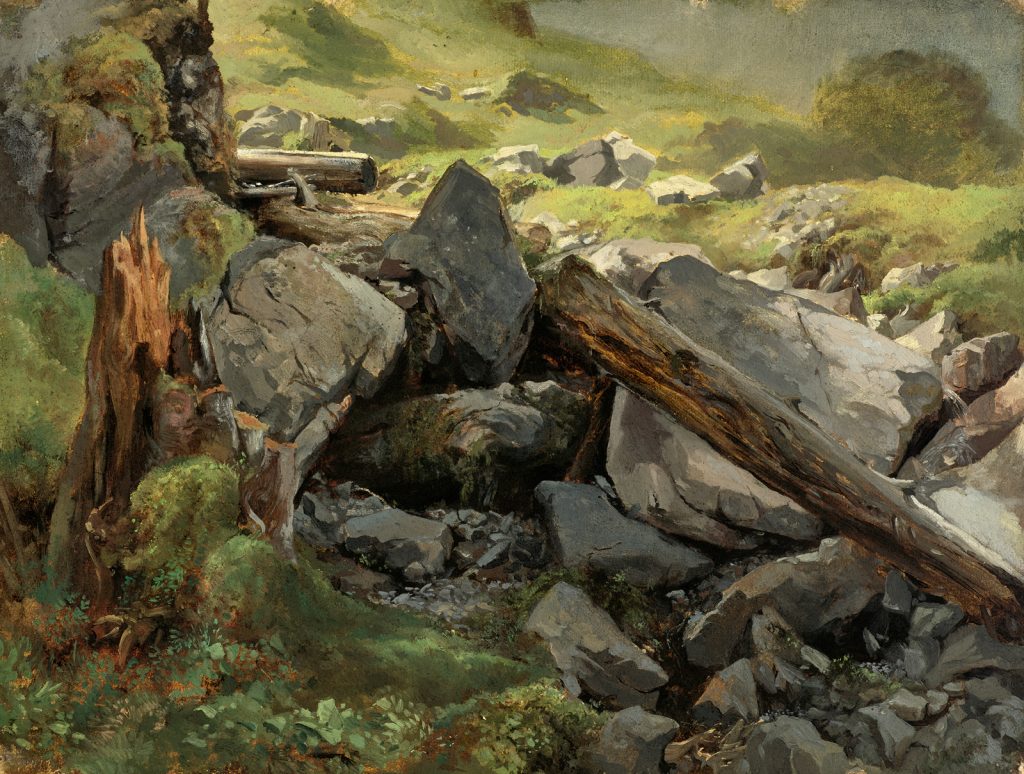Alexandre Calame
(Vevey, Switzerland 1810 - 1864 Menton)
Tree Stump and Boulders, Switzerland, c. 1850
Oil on paper, laid down on cardboard, 32.6 x 42.7 cm
Provenance:
Amélie Calame (1815-1907), Geneva, the artist’s widow, 1865;
Arthur Calame, Geneva (1843-1919), the artist’s son, 1907;
Marguerite Buscarlet-Calame, Geneva (on the verso the printed inventory label of Arthur Calame’s estate dated April 15, 1922, bearing the number 234);
Louis Buscarlet, Geneva, 1924;
Dr. Louis Glatt (1885-1978), Geneva, inv. 48, 1942;
Zurich, Koller, auction sale, November 28, 1996, lot 3004;
Asbjørn Lunde (1927-2017), New York, from 2003, inv. 210.
Exhibited:
Alpine Views. Alexandre Calame and the Swiss Landscape, Williamstown, Sterling and Francine Clark Art Institute, 2006, p. 86.
Alpine Views. Alexandre Calame and the Swiss Landscape, Storrs, The William Benton Museum of Art, University of Connecticut, 2007.
Literature:
Valentina Anker, Alexandre Calame: Vie et oeuvre, catalogue raisonné, Fribourg 1987, p. 397, no. 453.
The work is registered in the archives of the Schweizerisches Institut für Kunstwissenschaft (SIK-ISEA) in Zurich under archive number 15'455 ('Etude de Alex. Calame').
Alexandre Calame, like many of his contemporaries, never intended to offer his oil sketches for sale but kept them as his aide-mémoire – as models to serve as the basis for large-format studio paintings. Most of them remained in his studio until his death. Thus they did not appear on the market in any great number until his estate was dispersed at auction in Paris in 1865. Present-day collectors are attracted by their extraordinary virtuosity and topographical exactitude. The sketches convey a compellingly accurate impression of the atmospheric effects and the quality of light experienced before the motif. Calame’s determination to achieve a high degree of realism in his oil sketches was fundamental to the completion of the magisterial studio landscapes.1
1 See Alberto de Andrés, Alpine Views. Alexandre Calame and the Swiss Landscape, exhib. cat., Williamstown, Massachusetts, Sterling and Francine Clark Art Institute, New Haven and London 2006, p. 28.

